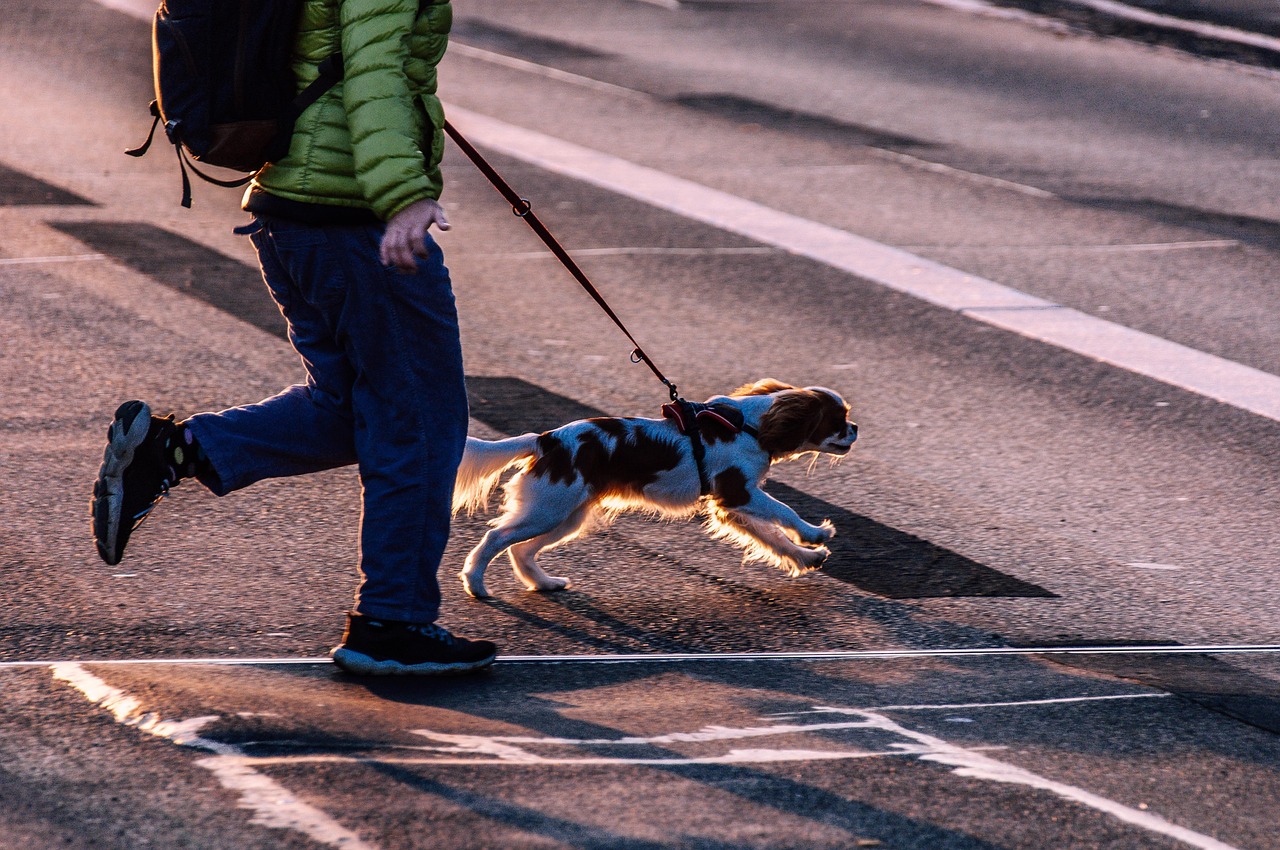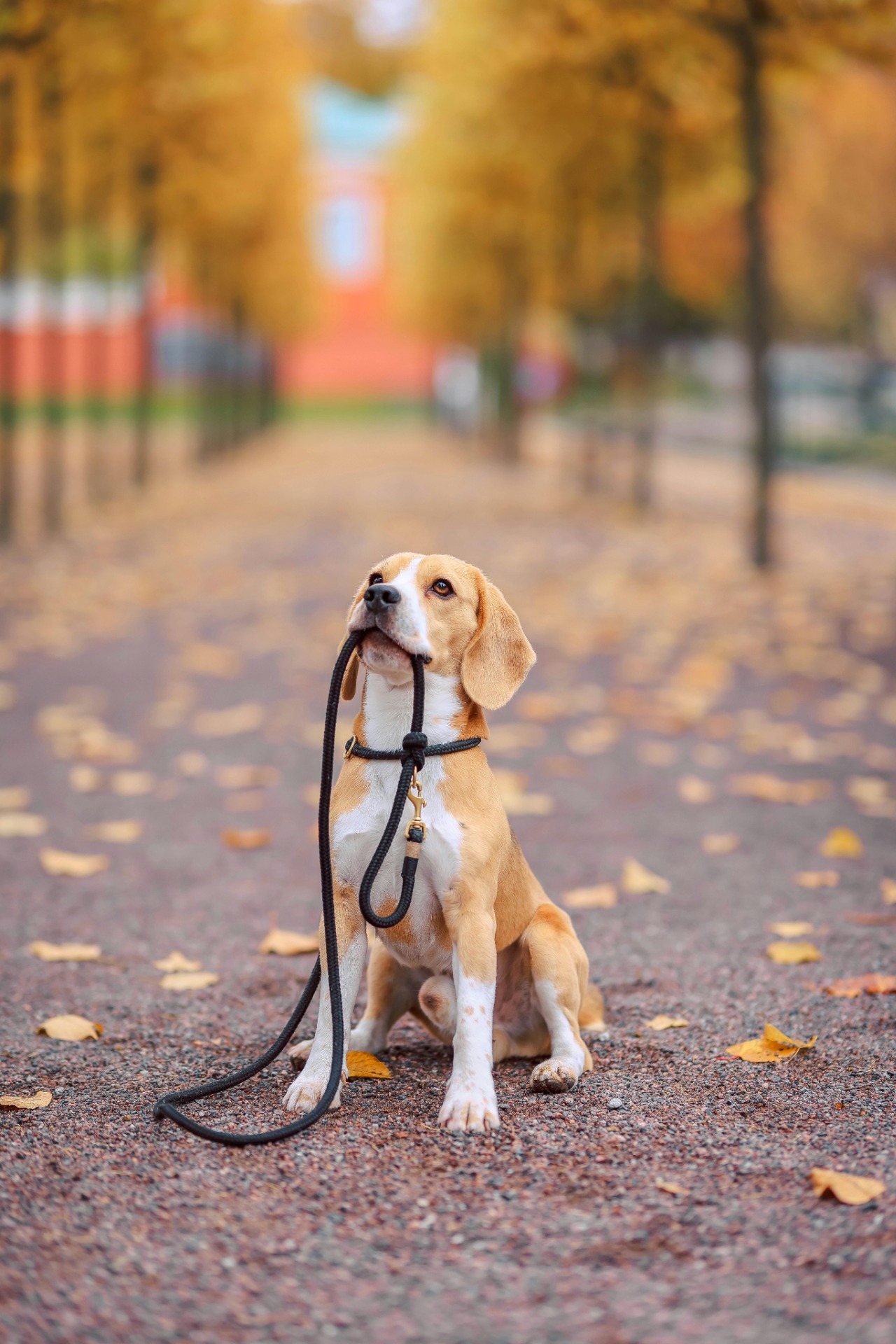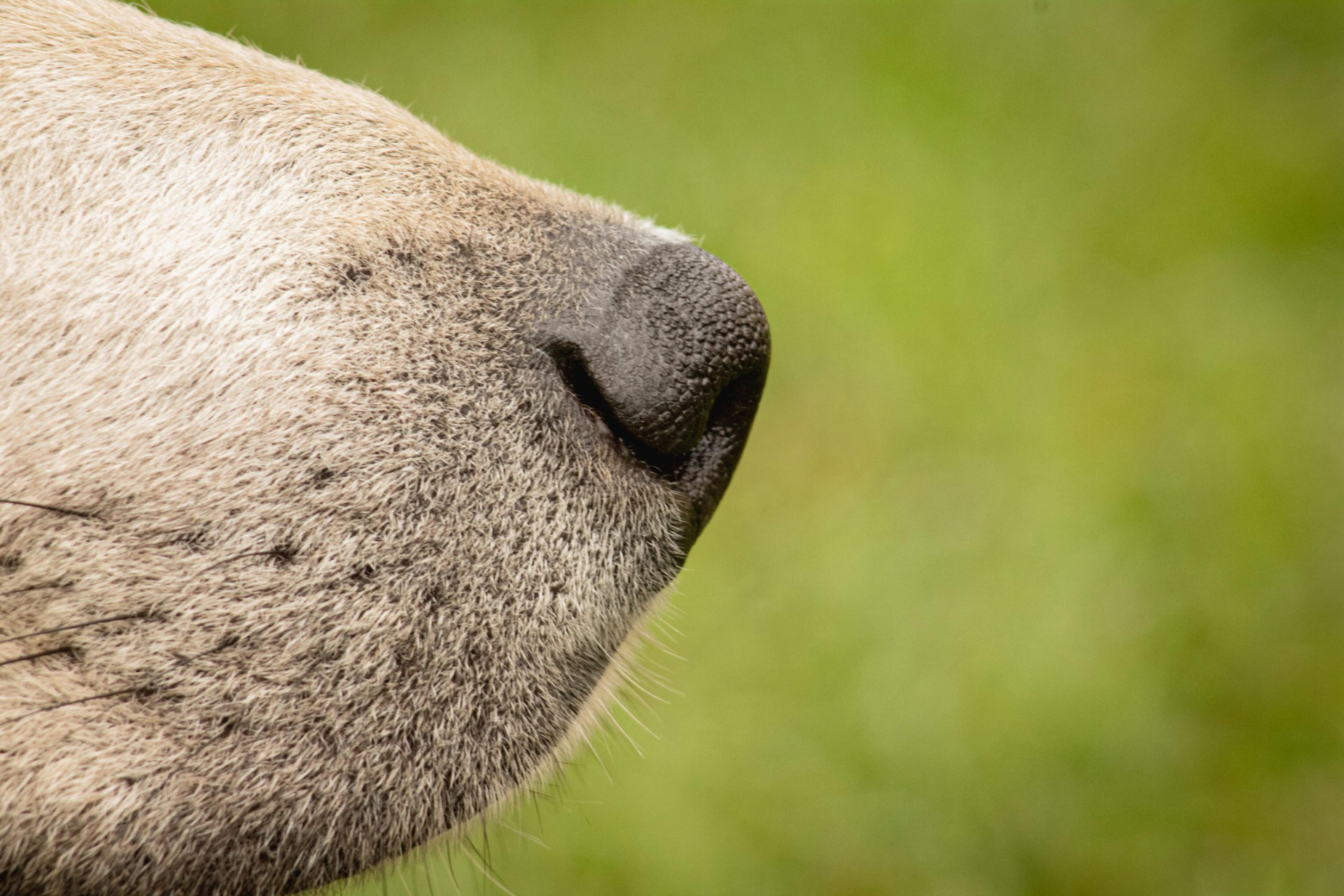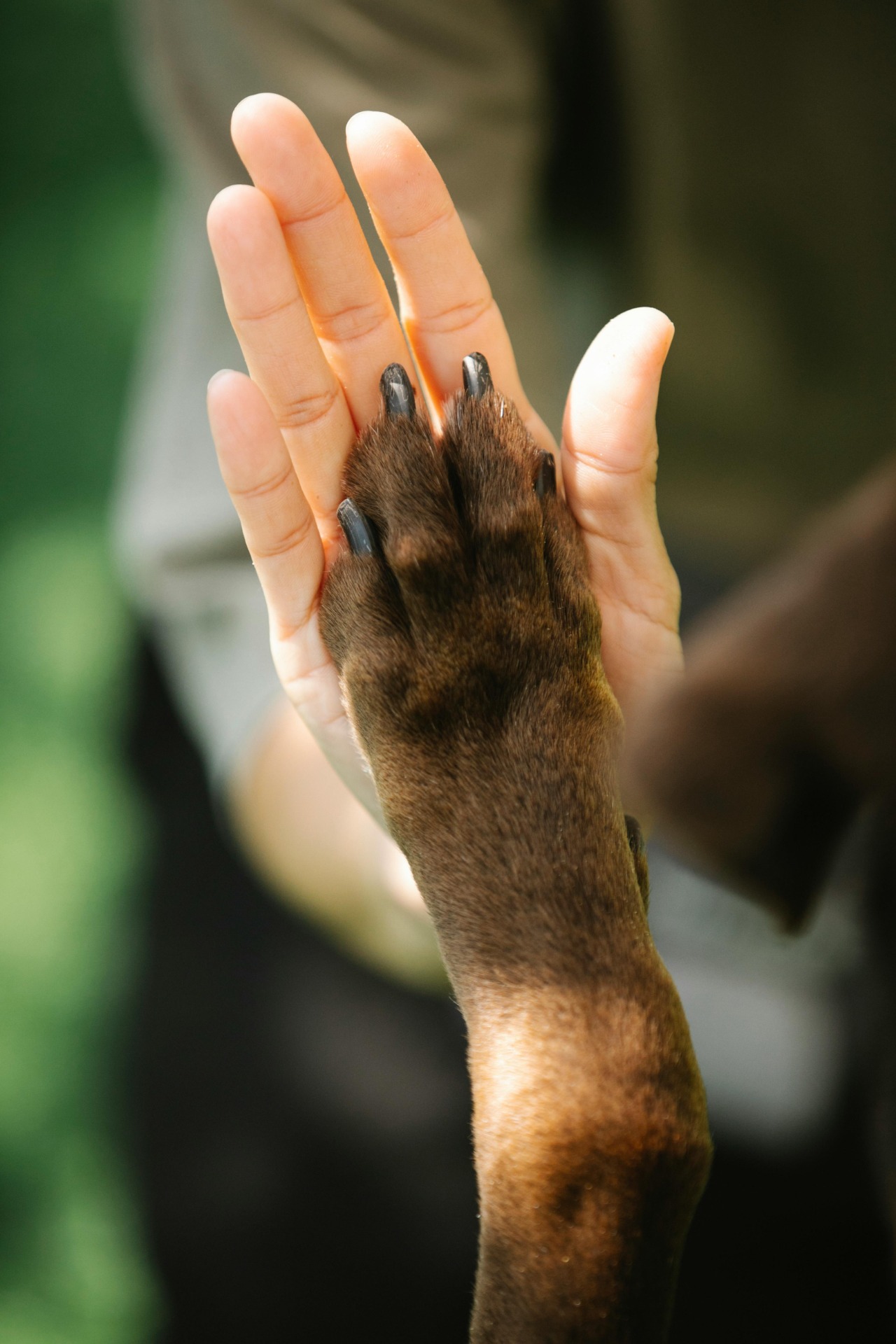Pulling on the leash: why it's important to handle it mindfully

Pulling on the leash is a common problem that many dog owners struggle with. For some, it's simple: their dog should never pull. Others don't mind it, for example while jogging or in specific locations. Some let it depend on the situation or aren't sure what the best approach is.
At Animavita, we see walks as more than just exercise. A walk should contribute to a dog's well-being: calmness, satisfaction and relaxation. That's why in this article, we'll take a close look at leash-pulling: why dogs pull, what the consequences are, what to watch for and what our ultimate goal really is.
Why do dogs pull?

To better understand leash-pulling, it's important to know where it comes from. Dogs naturally tend to walk faster than humans. Our slower pace can quickly create tension on the leash. On top of that, individual factors can also play a role: an anxious or sensitive dog may want to move faster out of uncertainty or stress.
There is also learned pulling behavior. Imagine a dog sees something interesting a few meters away, but the leash holds them back. The dog starts pulling, the owner keeps walking and eventually the dog reaches its goal. In that way, pulling is unconsiously rewarded. However, this doesn't mean your dog shouldn't be allowed to sniff. On the contrary, sniffing is extremely valuable and has a calming effect.
Medical factors should not be underestimated either. A dog experiencing pain or physical discomfort may move faster because it feels less stressfull on the body. Even if there are no visible signs of injury, your dog might still be experiencing discomfort or pain. That's why it's always a good idea to have a medical check-up to rule out such causes.
By understanding why a dog pulls, we can make more mindful choices and make walks more enjoyable for both dog and owner.
At Animavita, we take these possible causes into account on every walk. We adjust the pace, provide plenty of sniffing opportunities and pay attention to both the psychical and mental well-being of the dog.
Disadvantages of leash-pulling
When our goal is a relaxed walk, pulling on the leash actually works against that goal. When a dog pulls, there is constant tension on the leash, which runs through the entire body. The dog is mentally 'switched on' and wants to move quickly from one stimulus to another, causing the focus on a relaxed walk to be lost.
The tension in the body also makes dogs more sensitive to reactivity, fear or other external stimuli. As a result, in addition to the pulling itself, there is a risk of negative emotions arising. This can lead to lunging, fleeing or other stress behaviors. After the walk, the dog may seem unsatisfied and still have too much energy.
Prolonged pulling can also cause physical problems. Joints are subjected to greater strain, and when wearing a collar, the trachea, esophagus and neck experience extra pressure. Certain breeds such as Dachshunds, Cavaliers, Pugs, Great Danes or other dogs with breed-specific vulnerabilities are more prone to medical issues from pulling and require extra attention.
Additionally, pulling is a difficult behavior to unlearn. Because the dog is often unconsiously rewarded when it reaches its goal, pulling tends to persist stubbornly.
Leash tension or no leash tension?

You can already set the tone for a relaxed walk by keeping the leash loose. This gives your dog the opportunity to sniff more. Sniffing provides a sense of control and relaxation. It's one of the most natural and fulfilling activities for a dog. It helps release tension and ensures your dog comes home more satisfied and content than after a walk filled with stress and pulling.
During our walks at Animavita, we make sure dogs can sniff calmly without tension on the leash. This way, we create an environment where the dog can fully relax and meet its natural needs.
Possible mistakes when training relaxed walking
A common mistake when teaching relaxed walking is the use of positive punishment. This means applying an unplaesant sensation or pain to force the desired behavior. Examples include the use of a prong collar, choke chain, no-pull harness, leash jerks , or other methods meant to stop a dog from pulling. While these tools may seem effective in the short term, they completely undermine the goal of a relaxed walk.
With such methods, the dog cannot truly learn walk relaxed. Instead, they are more likely to constanly check whether punishment will follow, which damages the bond between dog and handler. This creates more tension for the dog, both mentally and physically. Because of this stress, the dog's natural needs (such as sniffing, feeling safe,...) remain only partially fulfilled. As a result, the likelihood increases that your dog will come home unsatisfied from the walk, and the trust between owner and dog is weakened.
Another mistake is giving up too quickly. Teaching your dog to stay relaxed on the leash takes time, but your patience will be rewarded with calm, enjoyable walks.
At Animavita, we don't see relaxed walking as simply preventing pulling. We focus on how the dog walks, what the possible causes of pulling are, what the dog needs, and what choices make the walk as relaxing as possible for them.
Key points to keep in mind

Here are some important key points for teaching relaxed walking: be clear and patient. For us, 'not pulling' may seem obvious, but for a dog this principle isn't always so straightforward.
It's not just about the training itself, the cause of the behavior is actually the most important factor for your dog's well-being. Do you suspect medical issues, even if no clear problems are visible? Have your dog checked by a vet. Is your dog anxious of sensitieve? Make sure their basic needs are being met: are they eating well, getting enough sleep, do they feel safe?
And perhaps most importantly: always remember that the ultimate goal is a relaxed walk!
What we do at Animavita
At Animavita, a walk goes far beyonnd simply letting a dog out. During our walking service, we don't just look at how the dog behaves on the leash. We also pay close attention to their mental, emotional and physical state.
While walking, we carefully observe how the dog is doing: are they moving comfortably, showing any signs of pain or discomfort, how are they behaving today? By noticing these small signals, often overlooked by others, we can prevent issues that may later have a major impact on walking and overall well-being. When something stands out, we discuss it with the owner and work together to find solutions. This can range fronm behavioral adjustments to advice on safety, nutrition or ways to help the dog feel more at ease.
Because our walking service takes place regulary, we get to know each dog in depth. This allows us to spot problems earlier. With degrees in veterinary assistance and animal behavior, we are able to identify concerns more quickly and assess the best next steps.
At Animavita, it's more than walking: it's about the dog's well-being, relaxation, and strengthening the bond between dog and owner.
© Animavita, all rights reserved. It is not permitted to copy or use texts or images from this site without written permission.
